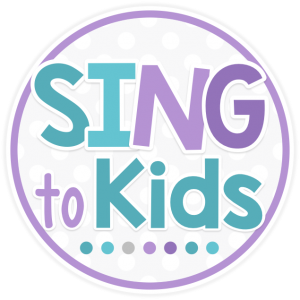There are many ways to teach a new song to students. Some teachers use a phrase by phrase approach with students echoing each phrase of the song, while others simply sing a song repeatedly until the students learn it through repetition. Depending on the desired outcome, either of these methods work. There is a third way to teach songs to students called Rote Song Procedure (RSP). RSP is a process used by Music Learning Theory practitioners.
Rote Song Procedure
Rote Song Procedure was designed not only to help students learn a song, but to also help them learn the deeper structure of the song – the tonality and meter. When working with young students, Rote Song Procedure is presented without labels of meter/tonality. We experience the whole song, then the parts that make the song, then the whole song again. Whole-Part-Whole! In MLT, we call this RSP at the Aural/Oral level. We’re building our vocabulary by experiencing things aurally and orally and laying a foundation for later learning.
RSP can also be experienced at the Verbal Association level of learning. This where we use music terminology to label what we are experiencing. We label the resting tone, the tonality, the macro and microbeats, and the meter while learning the song.
There’s one distinguishing factor about RSP at both the Aural/Oral and Verbal Association level of learning and it’s that the teacher is always guiding and giving explicit instruction during the process of learning. Edwin E. Gordon referred to this as Discrimination Learning.
The Teaching Process
So what are the steps within RSP? This is the process for Verbal Association:
- The teacher sings the song to the class. Students audiate.
- The teacher labels and models patting macrobeats, then sings the song to the class. Students audiate and pat macrobeats.
- The teacher labels and models patting microbeats, then sings the song to the class. Students audiate and pat microbeats.
- The teacher models moving to macrobeats and microbeats simultaneously, then sings the song to the class. Students audiate and move to macrobeats and microbeats simultaneously. Teacher labels meter.
- The teacher models singing the resting tone using solfege, then sings the song to the class. Throughout the song, the teacher pauses and signals for students to sing the resting tone. Students audiate and sing the resting tone. Teacher labels tonality.
- The teacher invites the students to audiate the song in its entirety. Students audiate song and signal that they finished.
- The teacher invites the students to sing the song in its entirety. Students sing the song.
Modifications
As with all things, there are slight variations in the process from teacher to teacher. I tend to add a step after 5 where I sing the song in its entirety before asking students to audiate it alone. After having performed the resting tone throughout the song, I think it’s important to present the whole again before inviting students to audiate its whole. It is recommended that we teach the melody separate from the words. It depends on the song for me. If I’m teaching a short song with repetitive lyrics, I choose to teach words and music together, but for longer songs, I separate them.
Making Sense of It All
Reading through RSP, it can feel like a lot to process both as a teacher and a student. As you work through it, it becomes a fluid sequence that not only helps students learn a song, but the tonality and meter of the song as well. I’m always amazed at how my students begin to internalize the process and apply it to every song they listen to in music! Want to know more about Music Learning Theory? Please check out the Gordon Institute for Music Learning (GIML) website. If Music Learning Theory speaks to you, why not check out one of our professional development level courses or workshops?
Want to see some examples of RSP in action? Check out my YouTube channel! You can see examples of MLT in action in elementary music!






Hi Jennifer, Thanks for sharing the Rote Song Procedure! I just learned about it this at one of the GIML summer workshops and am trying to apply it. I’m trying to think of how to do the macrobeat and microbeat when teaching online if my set up is a larger view of my head and upper body because my keyboard is right infront of me. Would you have any suggestions?